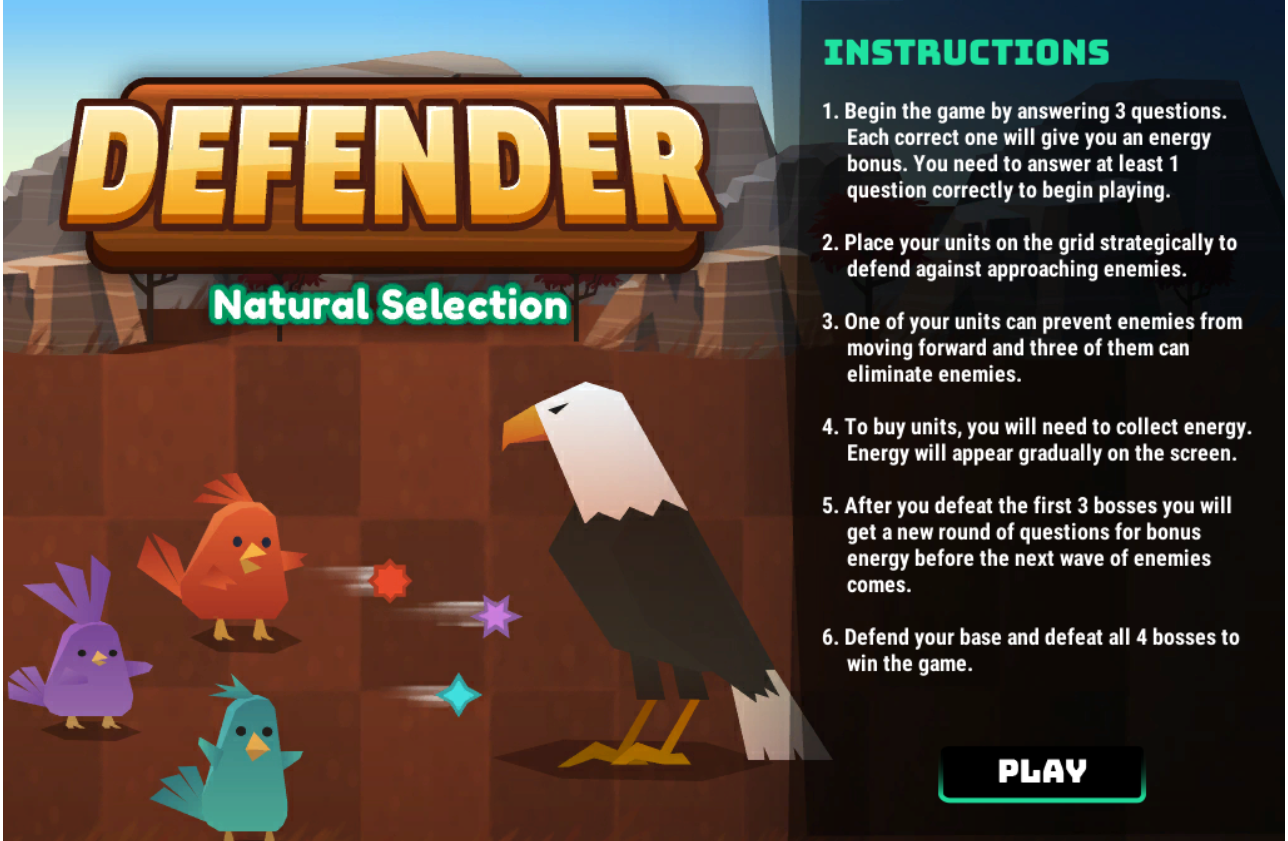
The key focus of an animal adaptation unit is to explore the different physical or behavioral adaptations that animals have that help them to survive in their environments. Some bird beaks have changed over time to allow them to feed on a certain food source whereas whales and polar bears have developed blubber to survive in cold environments. These fun activities, experiments, and interactive games are a fantastic way to grow your students’ knowledge of animal adaptions and allow them to have fun whilst doing so! Read on to learn more!
In a fun game, students must answer questions on animal adaptations to earn points. They can then use these points to buy units to place on the game grid to defend themselves against approaching enemies or predators.
This game is an excellent way to learn about the benefits of camouflage and then see it in action. Students play as a bird and must click on the moths to “eat” them. At the end of the game, students can see if they caught more camouflaged moths or non-camouflaged moths.
This fun resource from the National Park Service is highly interactive and effective! Students can roam the 3D digital landscape and try to spot different native animals. When they find the animal they can learn all about it and the adaptations it has developed to survive.
This fun game highlights different animal adaptations to students and why they are useful. Students must build a Power Suit using the requirements on the screen. As they build the suit, your students will learn more about different animals!
This matching quiz is a brilliant way to test students’ knowledge. Students can match up the topic word to its definition to complete the quiz.
These task cards are free to print and have lots of different questions and challenges to support students’ learning. Students could use these cards as fast finishing tasks or you could set them up as a carousel session.
Mimicry is when an animal adapts itself to look like another more dangerous animal in the hope that predators will leave it alone! With these worksheets, students can examine two animals and identify the subtle differences you can use to tell them apart from their dangerous doppelgangers!
Using the information at the top of the table, your student can explain how each animal adapted to their environment. Then, a question challenges them to apply their learning and explain their reasoning.
Students must identify the adaptation of each animal and explain its function. They can then think about if any other animals share a similar adaptation and what environments this particular adaptation is well-suited to.
A word search is the perfect starter activity to introduce key vocabulary that students might need to understand in future lessons. This word search is packed full of animal adaptation-related words and is free to print!
Fill a zip-lock bag 3/4 full with lard and then place another bag inside. Squish the lard until it’s coating the space between the two bags and then tape the bags around the edges. Students can then put their hands into icy water with the mitten on to experience how blubber keeps arctic animals warm in harsh environments.
Kids can create their waterproof penguins by coloring in the free printable template with crayons. Make sure they color in the white part with a white crayon too! Your students can then have fun soaking their penguins with water mixed with blue food dye to see how the water is repelled.
This activity shows students how the shape of a bird’s beak can help them pick up and eat different types of foods. Students can use different tools like tweezers, chopsticks, and tongs to pick up a variety of objects and learn which shapes work well and which do not.
This activity is inspired by The Mixed-Up Chameleon by Eric Carle. Kids can cut out different colored chameleons using translucent page dividers and then have fun finding surfaces which they blend into!
This fun experiment allows your students to explore mimicry as though they are a predator trying to catch a tasty meal! Students will try a clear soda and agree it tastes nice. They can then try seltzer which, although it looks like soda, tastes very different!
Take your learning outdoors with a fun camouflage activity! Create different colored cardstock animals with your students and then take them outside to discover places where they are best camouflaged.
This fantastic craft and experiment allow students to make their very own set of cat eyes to see in the dark with. All you’ll need is two tin cans, aluminum foil, elastic bands, a garbage bag, and some cardboard.
Using a hula hoop and some sticky tape, students can create a spider web. They can then take turns throwing cotton balls or pom poms at their web to try to “catch” flies! Ask students how they could change their webs to try to catch more flies in a way that a spider does.
Create your very own water striders using copper wire to explore how these insects have adapted to walk on water! Students can experiment with the size of their strider, the length of its legs, and the distance between the legs to see if they can get them to balance on top of the water.
Students will love this super cute lesson as they experiment to discover how puppies keep warm by huddling together. To set up this experiment, students can use glass jars filled with warm water and a thermometer to monitor the temperature under different conditions. If the jars are standing alone they will cool much faster than jars that are bundled together.